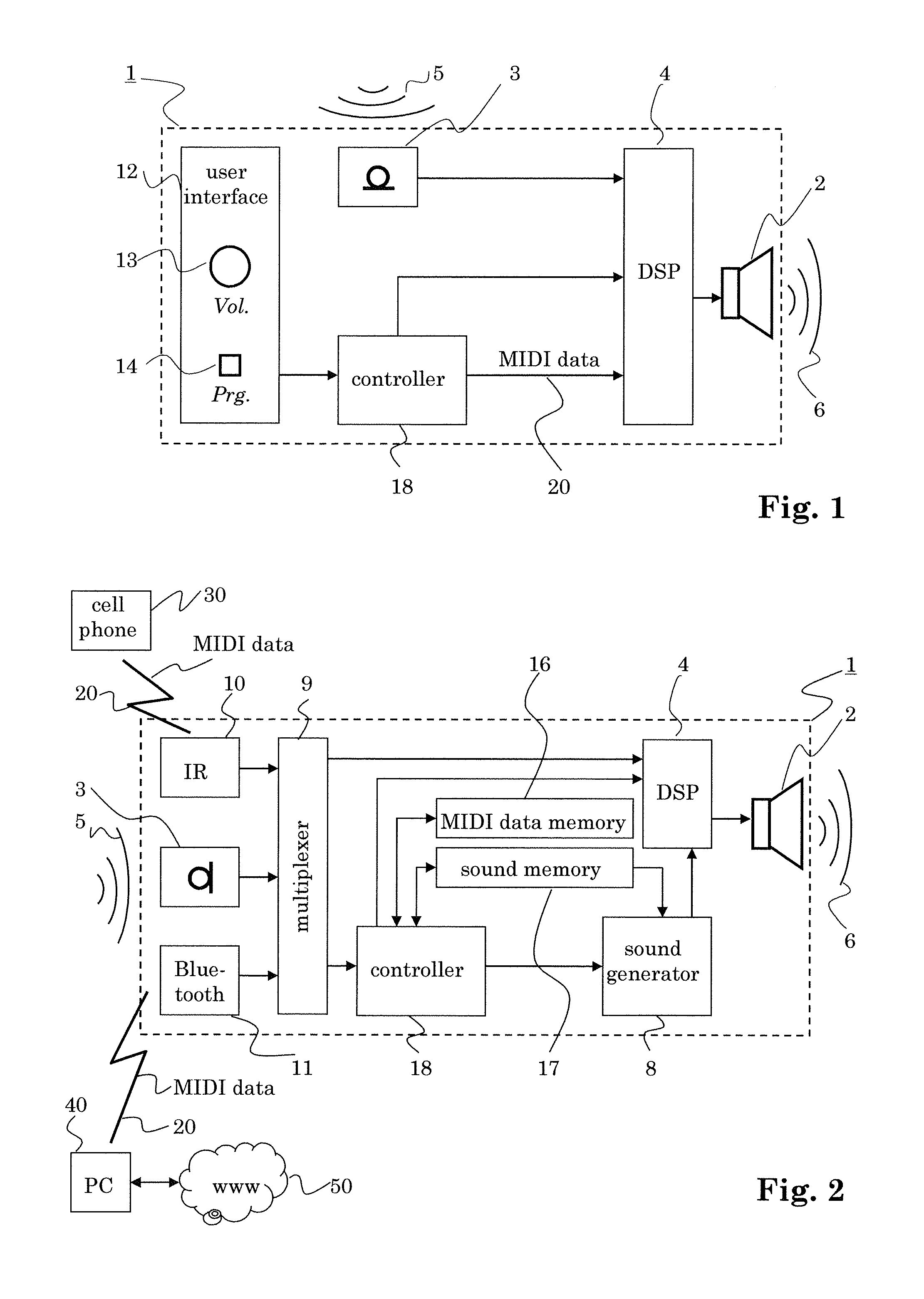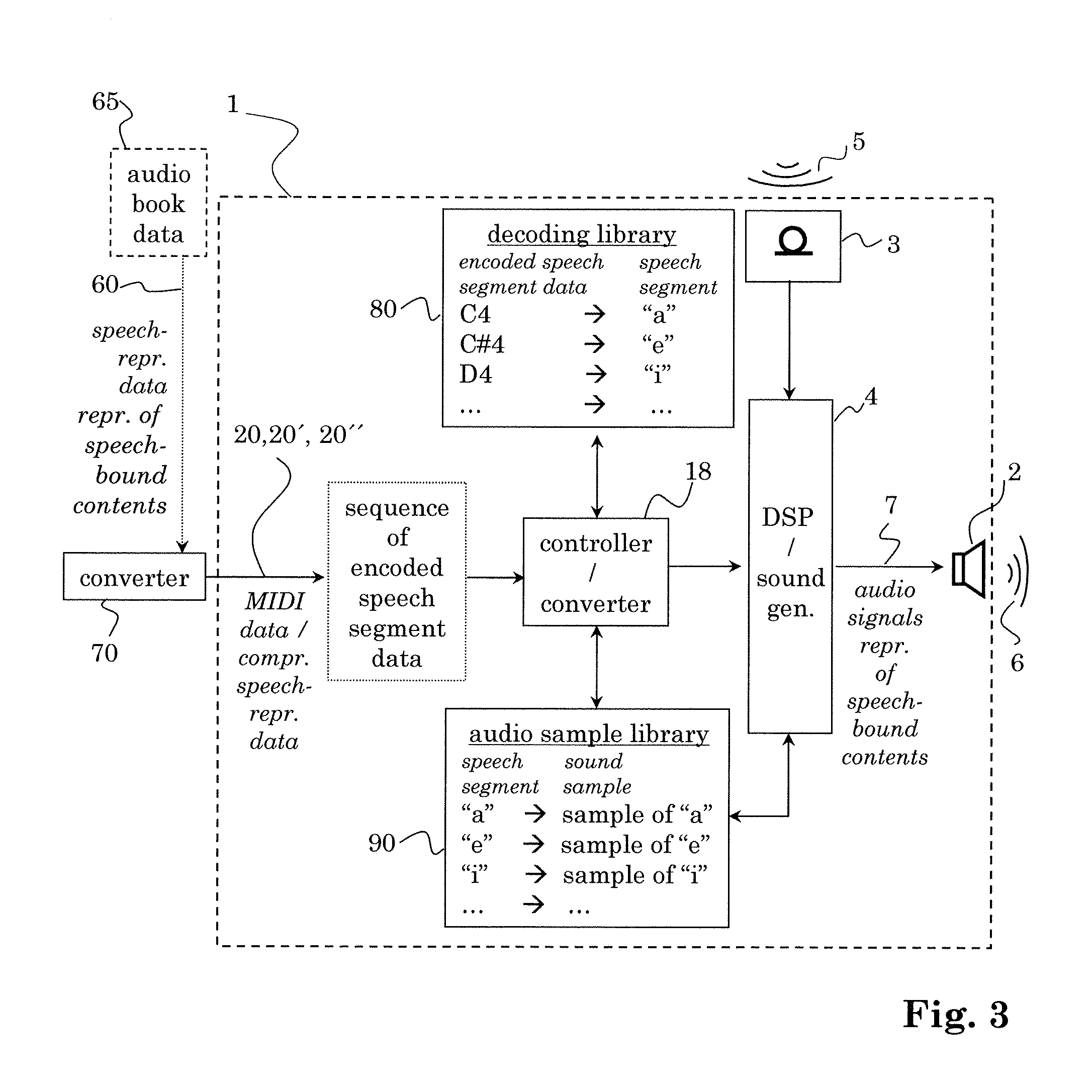Midi-compatible hearing device and reproduction of speech sound in a hearing device
a hearing device and midi-compatible technology, applied in the field of hearing devices, can solve the problems of limited wireless communication bandwidth, and achieve the effect of simple communication and efficient control of sound generation
- Summary
- Abstract
- Description
- Claims
- Application Information
AI Technical Summary
Benefits of technology
Problems solved by technology
Method used
Image
Examples
Embodiment Construction
[0172]FIG. 1 shows a block diagram of a hearing device 1, e.g., a hearing aid, a hearing protection device, a communication device or the like. It comprises an input transducer 3, e.g., as indicated in FIG. 1, a microphone for converting incoming sound 5 into an electrical signal, which is fed into a signal processor 4, in which the signal can be processed and amplified. It is, of course, possible to provide a telephone coil as an input transducer. An amplification may take place in a separate amplifier. The processed amplified signal is then, in an output transducer 2, converted into a signal 6 to be perceived by the user of the hearing device. When, e.g., the transducer 2 is a loudspeaker, the signal 6 is an acoustical wave. In case of an implanted device 1, the signal 6 can be an electrical signal.
[0173]The device 1 of FIG. 1 furthermore comprises a user interface 12, through which the hearing device user may communicate with the hearing device 1. It may comprise a volume wheel 1...
PUM
 Login to View More
Login to View More Abstract
Description
Claims
Application Information
 Login to View More
Login to View More - R&D
- Intellectual Property
- Life Sciences
- Materials
- Tech Scout
- Unparalleled Data Quality
- Higher Quality Content
- 60% Fewer Hallucinations
Browse by: Latest US Patents, China's latest patents, Technical Efficacy Thesaurus, Application Domain, Technology Topic, Popular Technical Reports.
© 2025 PatSnap. All rights reserved.Legal|Privacy policy|Modern Slavery Act Transparency Statement|Sitemap|About US| Contact US: help@patsnap.com



